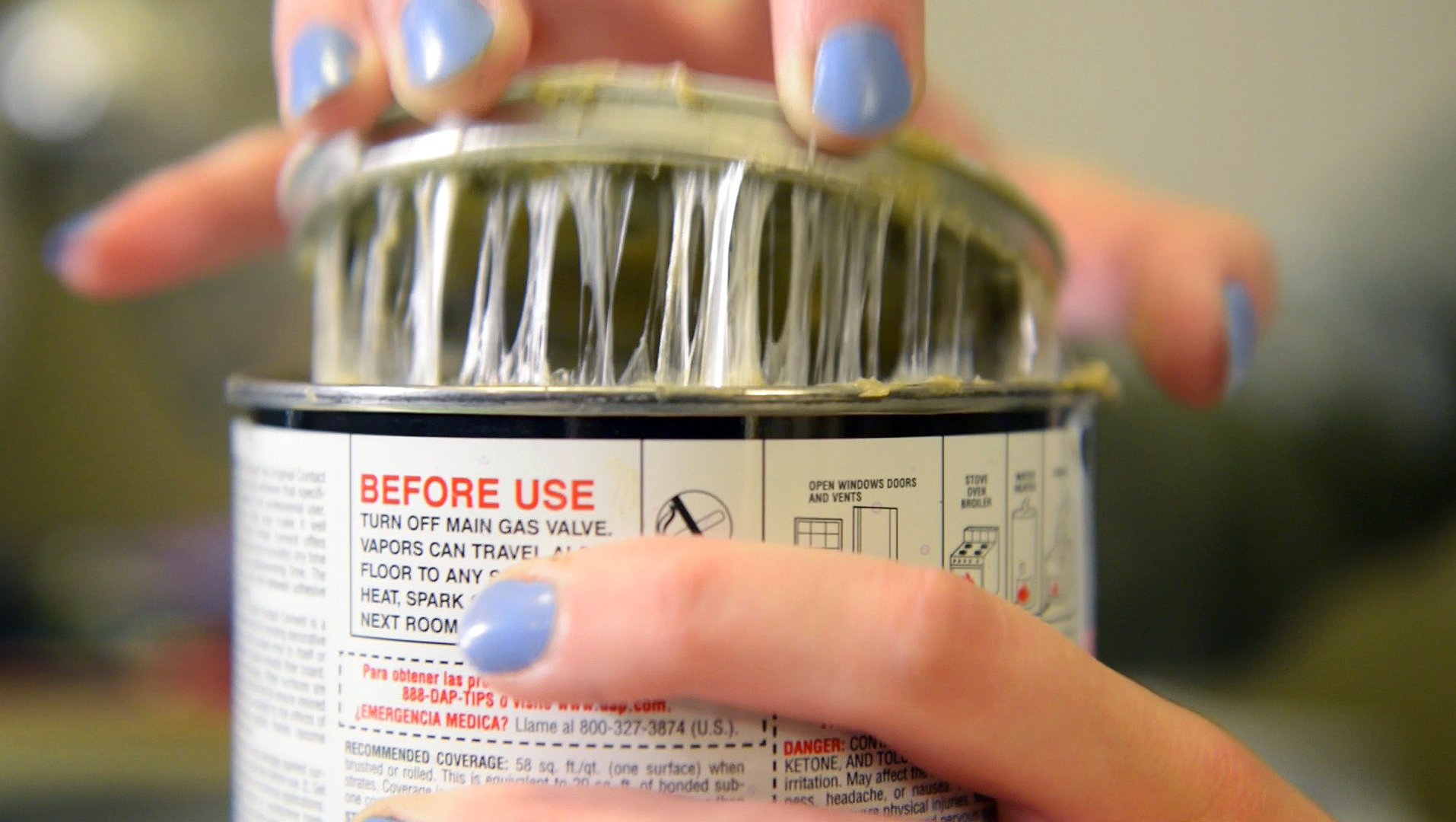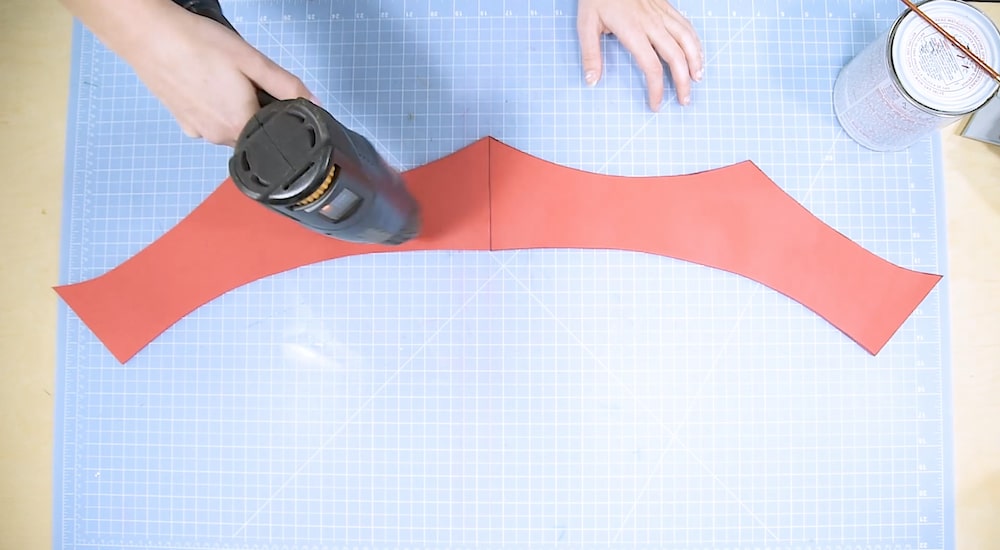EVA is undeniably one of the most popular cosplay materials today. It ticks off a lot of the qualities cosplayers are looking for when building armor and props: it’s lightweight, it’s relatively easy to get in large qualities, you can paint and weather it however you want, and it’s not too difficult to build with. But another plus for EVA foam that might not immediately come to mind is it’s versatility: not only can you use it in a lot of different ways, but you can glue it with a lot of different adhesives. But which glues and adhesives work best with EVA foam for cosplay? In this post, we’ll explain how to glue EVA foam for cosplay using a few of the most compatible adhesives.
The Best Cosplay Adhesives for EVA Foam

- Contact/barge cement: Contact cement, or barge, is one of the most popular adhesives for EVA foam because it provides one of the strongest and most permanent bonds of any adhesive on the list. Contact cement, if you’ve never worked with it, is pretty intense and toxic, which is what makes it so effective. When you’re using contact cement, you’ll always need to use a respirator and/or work in a well-ventilated area or outside to avoid breathing in the harmful fumes. However, if you’re using it safely, it only takes a little contact cement to bond two pieces of foam together for good, and you can sand it as necessary.
- Double-sided Attach & Build sheets: Attach & Build sheets were designed to work with all common cosplay materials in mind. These double-sided sheets can be cut into shapes or strips, whatever you need, and then you can just peel and stick them into place. There’s no mess, no toxicity to worry about, and the bond is instant — no waiting for glue to cure or dry. If you’re looking for a quick, clean way to bond EVA foam to itself or to almost any other material, especially if you’re working indoors or in a small space, Attach & Build would be an ideal choice.

- Hot glue: Hot glue is another incredibly popular option for adhering EVA foam. Hot glue sticks are heat activated and can be easily applied onto large areas or into small cracks and crevasses. Hot glue is great for seams and filling in nicks and gaps in your foam as well. Hot glue shouldn’t melt your EVA foam like it would melt insulation foam, so you can get a pretty quick, permanent bond with it. It’s also non-toxic and one of the cheapest options on the list if you’re concerned about costs.
- Rubber cement: Another option for EVA foam is rubber cement. It’s a lot like contact cement, except it’s slightly less intense and usually comes in a smaller bottle and at a lower cost. The fumes are still somewhat harmful, so you should wear a respirator or work with it in a well-ventilated area or outside. Most rubber cement comes with a brush (or you can use your own), and one of the benefits of this kind of glue is that you can brush it onto large areas of foam quickly. This could come in handy for layering foam when you need a thicker piece for armor or props. Once the cement is dry, you can cut through it, but your scissors or blade might get a little sticky.
Adhering and Heat Forming EVA Foam
 Adhering your foam pieces together is just one small part of the process. Unless you’re creating a piece that’s completely flat (which could happen occasionally), you’ll probably need to heat form your foam piece into some kind of curve. In general, curved foam has a tendency to pull away from adhesives (because the foam will always “want” to be straight and flat), but choosing the right adhesive can help you get the best bond to your curved EVA elements. Which glue you decide to use, however, will make a difference in when you can heat form your pieces. For one thing, if you use hot glue before you hit your foam with your heat gun, the glue could reactivate, and your whole piece could come apart. Contact and rubber cement can also be reactivated by heat, so it’s best to use these adhesives after heat forming your foam as well.
Adhering your foam pieces together is just one small part of the process. Unless you’re creating a piece that’s completely flat (which could happen occasionally), you’ll probably need to heat form your foam piece into some kind of curve. In general, curved foam has a tendency to pull away from adhesives (because the foam will always “want” to be straight and flat), but choosing the right adhesive can help you get the best bond to your curved EVA elements. Which glue you decide to use, however, will make a difference in when you can heat form your pieces. For one thing, if you use hot glue before you hit your foam with your heat gun, the glue could reactivate, and your whole piece could come apart. Contact and rubber cement can also be reactivated by heat, so it’s best to use these adhesives after heat forming your foam as well.
However, if you need to heat form or bend your EVA after your adhesive is already applied, Attach & Build sheets can be your ideal solution. Attach & Build can actually be heated without melting down or reactivating the adhesive because it bonds instantly to begin with and requires no heat to activate or cure. So say you needed to refine the shape of your foam or curve a larger piece you adhered together at once (or any other situation involving heat). With Attach & Build, you have the choice to use heat at any point in the process, before or after adhering. (As a bonus, you can also cut through Attach & Build after it’s been applied without gunking up your blade.) The point is that you have several adhesives available to you when you’re working with EVA foam, and different adhesives will be best for different jobs. There may also be other adhesive options that we haven’t mentioned in this post that might be perfect for your project and your process. It’s just up to you to choose which one works best for you and your cosplay.